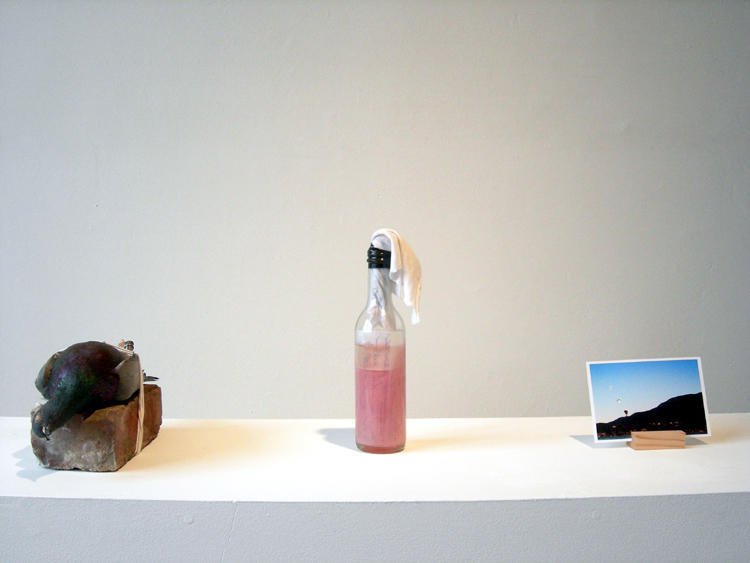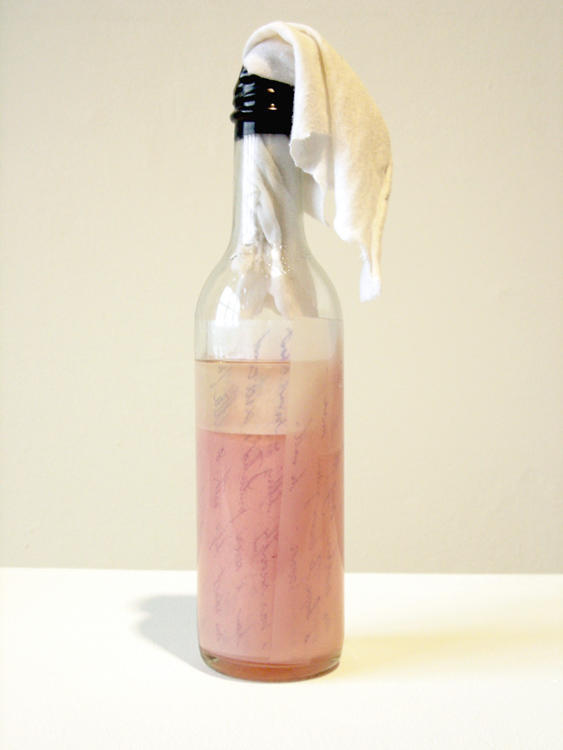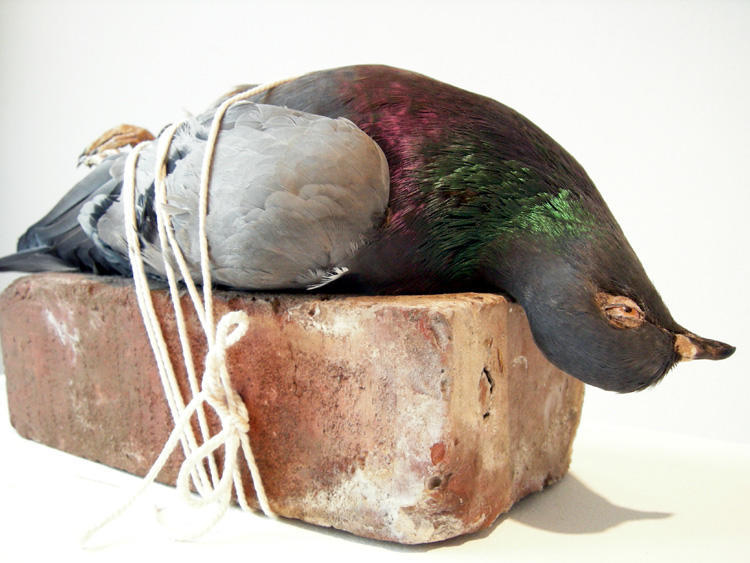
A dead carrier pigeon lies on its back tied to a single weathered brick. Its posture indicates that it is dead, but the bird is not entirely without dignity; its iridescent plumage evokes the majesty of a peacock. a tiny metal capsule clings to one of its curled-up legs, a miniature paper scroll contained within, which reads: “By the way, just so you know, your window is breakable and someone can get in through it.”
Abbas Akhavan’s latest project, Correspondences, draws on an inventory of symbols — the iconic carrier pigeon mentioned here, a Molotov cocktail, and the puff of the mushroom cloud. Developed as part of a five-week artist-in-residence program at Stratagem Pacific Consulting, a conflict-resolution firm in Vancouver, Canada, the work is part of the Vancouver-based, Iranian-born artist’s ongoing investigation, comprising video, drawing, painting, and sculpture, of the relationship between violence and the everyday.
Correspondences presents a kind of weaponized communications system in which vehicles of transmission are at the same time means of destruction. Akhavan’s homing pigeon signifies the impossibility of communication and of return. Used by militaries during the world wars as a way to send messages from the battlefield back to headquarters, carrier pigeons were driven by the instinct to roost. In Akhavan’s rendering, as a dead and bound object the pigeon implies that breakdowns in communication provoke undesirable responses, ranging from violence and exile to death.

Beside the bird sits a Molotov cocktail, its flammable pink stew soaking the inky pages of a letter. A clean white rag drapes the bottle’s neck like a cockscomb, and in this state the object is purely sculptural, an inert presence that is activated as a weapon only by fire. The words on the letter appear indistinct, and the implication is that these details will forever remain undisclosed, destroyed in the moment of delivery. In another sense, however, the object resembles a message in a bottle, an SOS. Whether used as a weapon or a plea, the object captures a desperate attempt to make oneself heard.
The Molotov cocktail is a paradox — both a vehicle of expression for the disenfranchised and a potential inhibitor of legitimate forms of communication. With a letter in the bottle, the artist conjures an image of the castaway who lives without the comforts of home, community, and society, frantically sending out messages in hopes of being rescued. The bottle silently acknowledges the desperate condition of abandonment while simultaneously recognizing the possibility, however improbable, of being rescued — spared the death sentence of desertion.

In its current form, Correspondences also includes a color photograph divided into three sections: a slice of sea, a mass of mountainous land clustered with housing, and an expanse of blue sky that provides the backdrop for an apocalyptic drama in which mushroom clouds dissolve into smoke signals. The photo and objects greet visitors to Stratagem’s main office, who’ve ostensibly arrived with grievances and differences to air and settle.
Occupying the reception area, the work ironically warns the firm’s clients of the potential failures and catastrophes inherent in communication, while concurrently articulating the need for open channels, legitimacy, and exchange. The elements of Correspondences remind us through their fragile materiality — the pigeon’s carcass, the glass bottle — that a delicate balance makes all the difference.